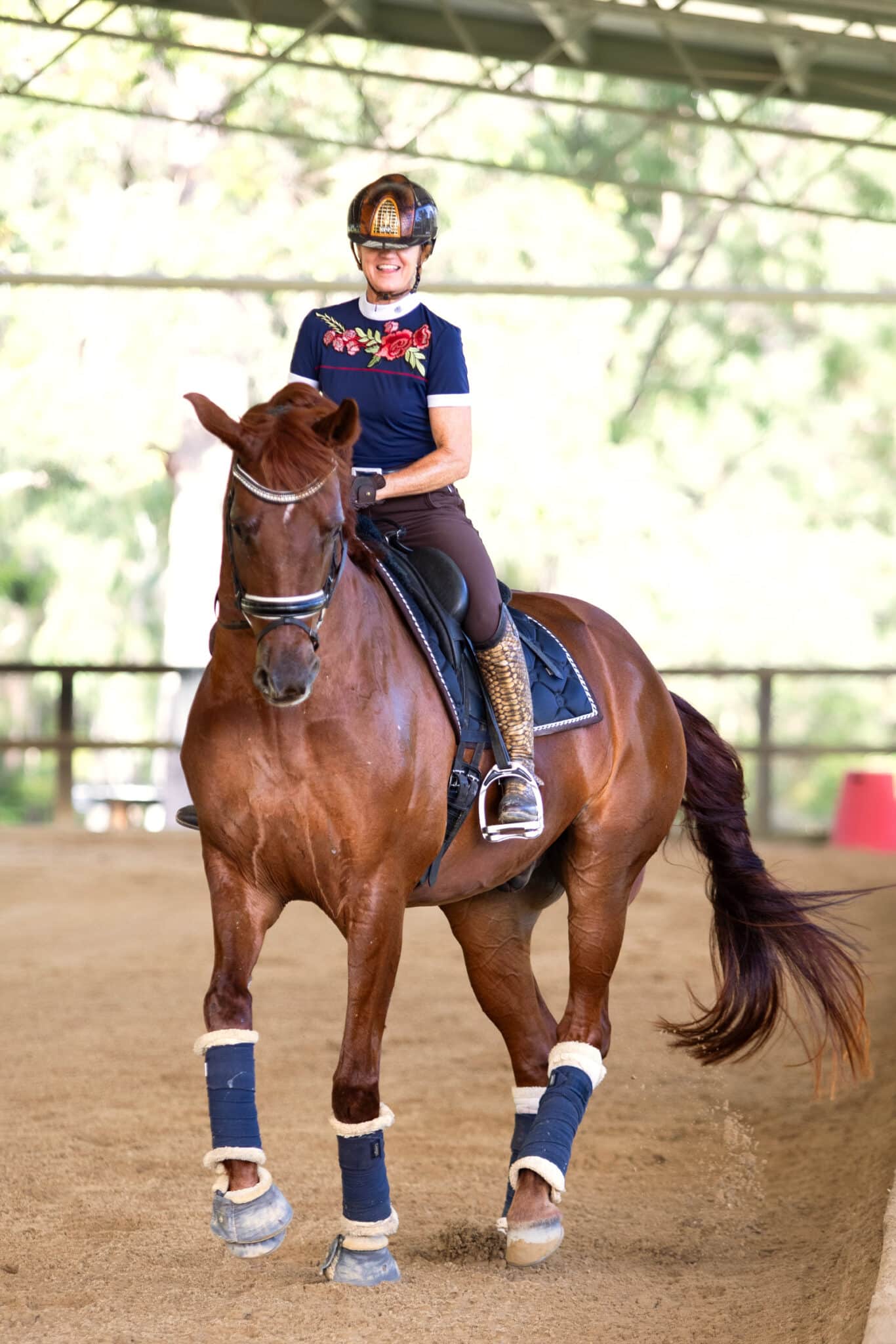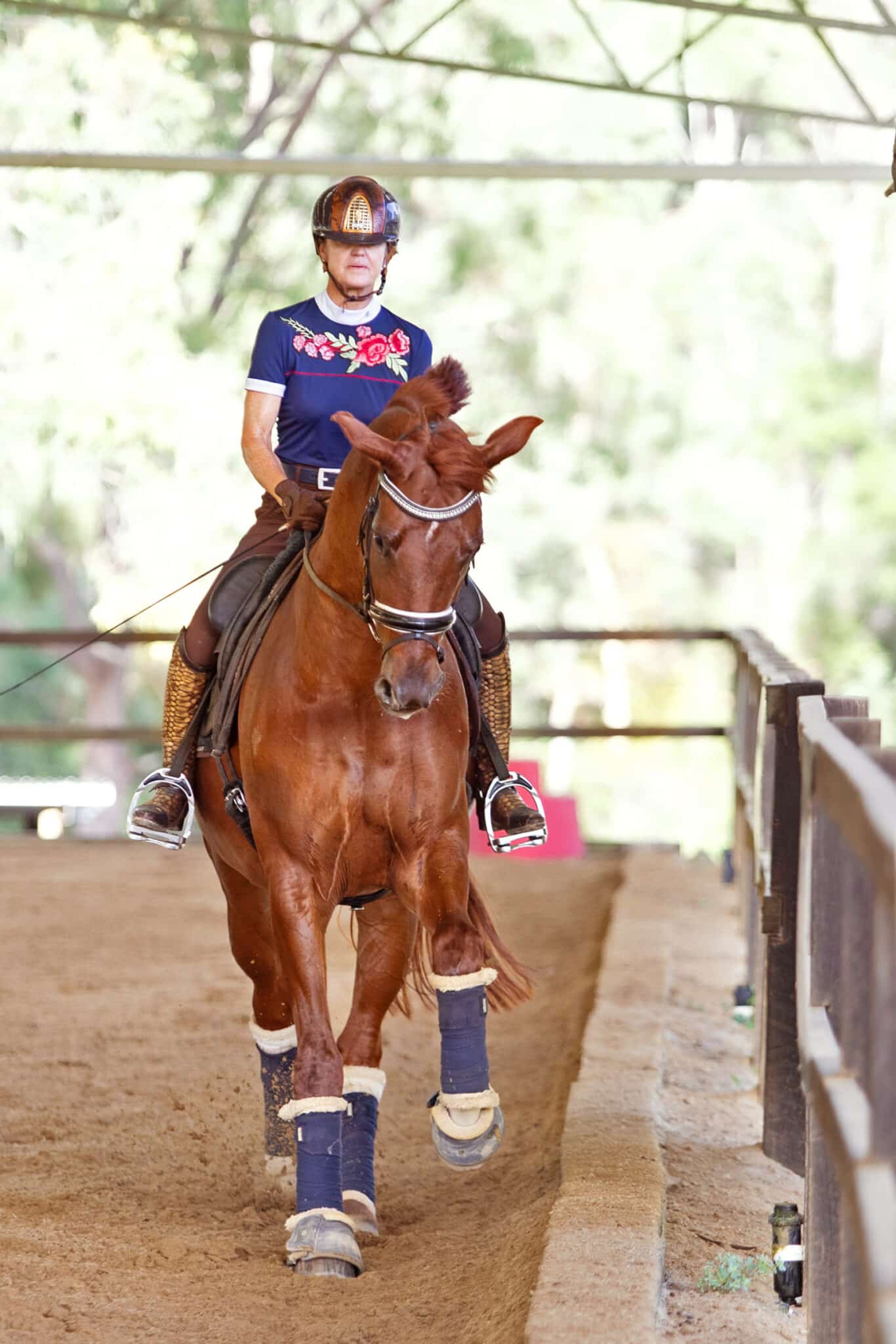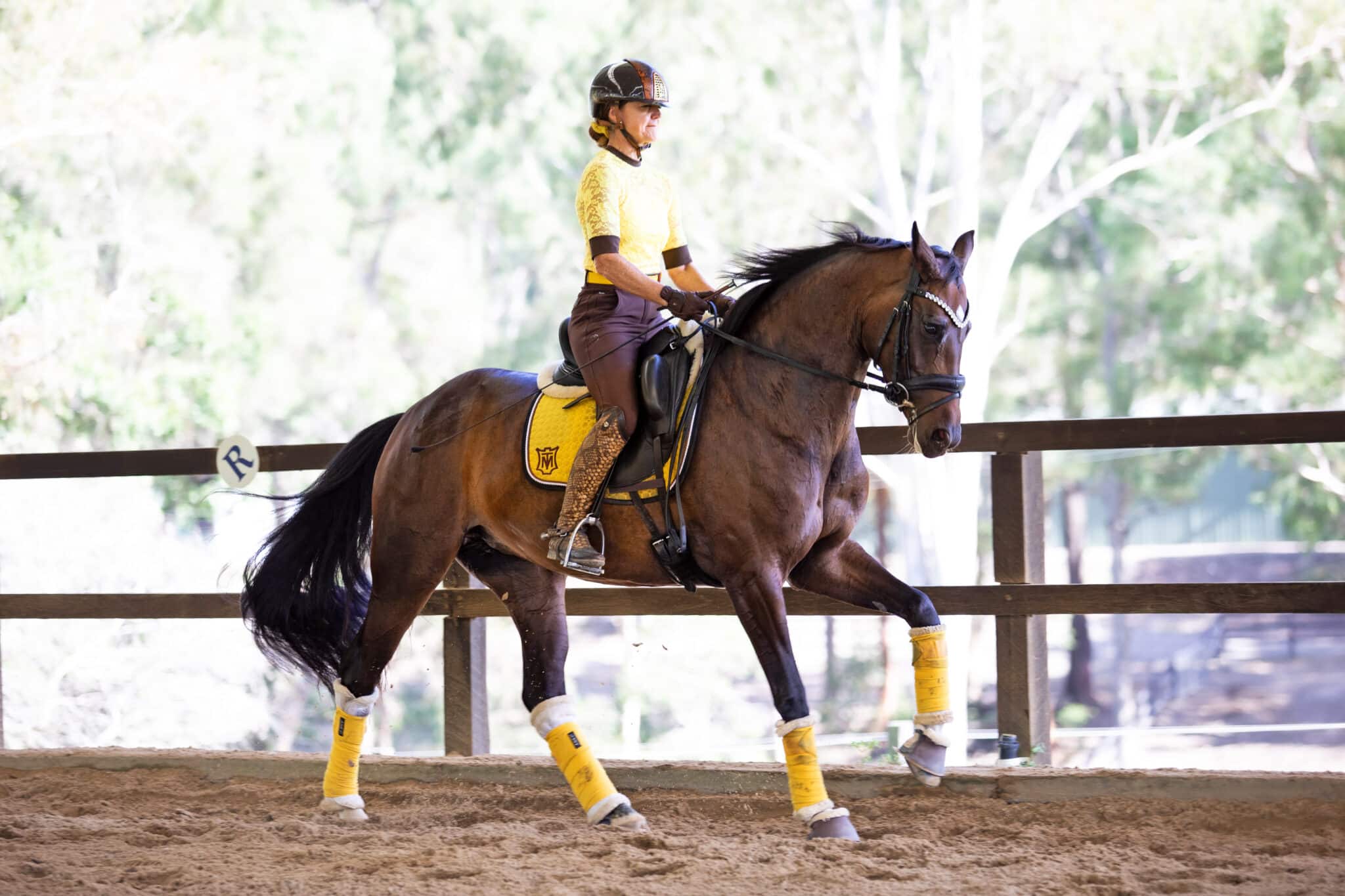The importance of counter canter
The benefits of counter canter are many. NICOLE TOUGH explains her approach to successfully training for this movement.

Improve your horse’s canter with the suppling, straightening and engaging effects of counter canter. It also helps to teach obedience to the rider’s aids and is an important precursor to flying change training.
Introduced at novice level, the degree of difficulty in counter canter gradually increases through the levels, highlighting obedience and balance. If the horse isn’t balanced in canter, they will either become more on the forehand, lose clarity of rhythm, speed up, or fall out of canter altogether.
Counter canter is when the horse is cantering in a direction with the outside foreleg leading and poll flexion to the same side as the leading leg (in right canter with right flexion going to the left direction and vice versa). Your horse is ready to start schooling counter canter when they have a good quality canter and can lengthen and shorten the steps without loss of balance.
For the rider, mastering counter canter improves co-ordination and develops feel. In a right counter canter (where the horse is in right lead canter and in shoulder-fore right position, travelling in the left direction around the arena), the rider should maintain ‘right’ position with their right leg at the girth and hold the left leg back i.e. holding right canter aids on.
Horses initially find the concept of counter canter hard. They feel off balance and attempt to correct their balance by themselves, often becoming discombobulated. Give your horse time to learn, and balance will develop along with the straightness, strength, agility, and collection which comes with increased engagement and training.
Progression exercises for teaching counter canter include starting with a single shallow loop from the corner to the quarter line. Straighten for a few steps on the quarter line before using your ‘inside’ leg to turn back to the corner on the same side of the school. If in right canter, don’t

use the left rein to turn back as this will unbalance the horse (and vice versa if in left canter). Next, progress the loop to the centre line (as described in the 2.3 dressage test), before moving on to the three loop serpentine with no change of lead, maintaining shoulder-fore position to the leading leg on the middle loop.
The next step is changing rein across the diagonal and proceeding around the short side in counter canter; or turn up the centre line and return to the track on the same side, maintaining the counter lead around the short side and back across the diagonal to the ‘true’ canter.
From here, whole laps in counter canter, changing the bend and flexion with no change of lead, and making bigger and smaller canter steps are great exercises to develop suppleness, helping to avoid negative tension when it’s time to start the flying changes.
Other counter canter exercises that are equally beneficial include:
- When in counter canter, remain in shoulder fore (with the shoulders of the horse closer to the wall than the haunches), with the rider in left position for left canter or right position for right canter, regardless of the direction.
- A good suppling exercise is counter canter in the renvers position.
- Another favourite exercise for elementary level horses and one which helps with advanced training later on, is to turn right canter onto the centre line and leg yield back to the long side to the right, keeping the horse’s spine parallel to the long side and with flexion left at the poll. On approaching the long side, re-position the horse in shoulder-fore right (changing back to right flexion) and maintain right canter around the short side, coming back across the diagonal in medium canter and returning to ‘true’ canter (and all vice versa to the left).
The goal in all counter canter exercises is to maintain the same quality as in ‘true’ canter; and these progressive exercises improve strength, suppleness, confidence and balance.

The straightening effects of counter canter cannot be overestimated. If your horse continually swings their haunches to the inside, you can take them into counter canter, using your ‘outside leg’ to straighten the horse’s spine to be parallel with the long side. And an important tip: if your horse offers an unaided flying change, never flying change back. Always walk and return to the counter lead, even if you have to repeat this ten times. If you correct an unaided flying change with a flying change, you will create a problem – your horse will absolutely change again and will not hold counter canter.
With systematic counter canter schooling, your horse will be calmer in their flying change training, and there will be less room for error in dressage tests up to Grand Prix level.



